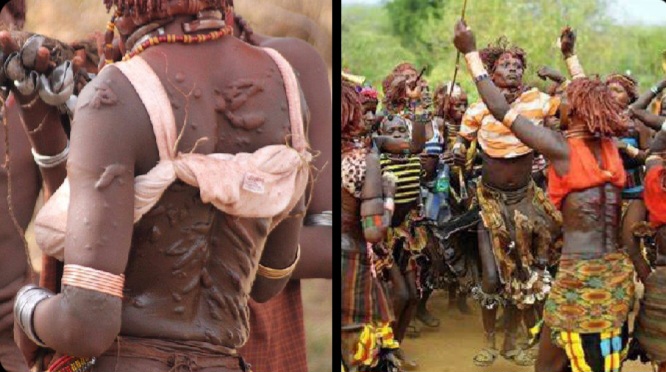In the heart of a remote tribe nestled deep in the jungles of [fictional location], love comes with a painful price.
The tradition of marriage here is marked not by joyful celebrations but by brutal floggings, leaving deep scars of love etched on the bodies of women.For generations, the tribe has upheld this centuries-old custom, believing that the intensity of the flogging ritual strengthens the bond between husband and wife.
As young women come of age, they eagerly anticipate their initiation into this ritual, viewing it as a rite of passage into womanhood and a testament to their commitment to love.
The ceremony begins with a gathering of elders and villagers adorned in vibrant traditional attire.
The rhythmic beat of drums fills the air, adding an aura of solemnity to the proceedings.The chosen bride, adorned in intricate jewelry and ceremonial attire, stands bravely before her future husband, ready to endure the ultimate test of love.
With each strike of the ceremonial whip, the tribe’s history and culture intertwine with the couple’s destiny.
The flogging is not meant to cause permanent harm but to leave visible marks symbolizing the depth of their love and devotion.
Tears mingle with smiles as the bride’s endurance is seen as a testament to her strength and commitment.
While outsiders may view this tradition as archaic or cruel, for the [tribe name] tribe, it is a sacred ritual that binds generations together.
Love, for them, is not just a fleeting emotion but a tangible mark etched into their skin, a reminder of the sacrifices made for the ones they hold dear.
As the sun sets on another flogging ceremony, the echoes of tribal chants fade into the night, leaving behind a community united by love, tradition, and the enduring scars that tell their unique story.




